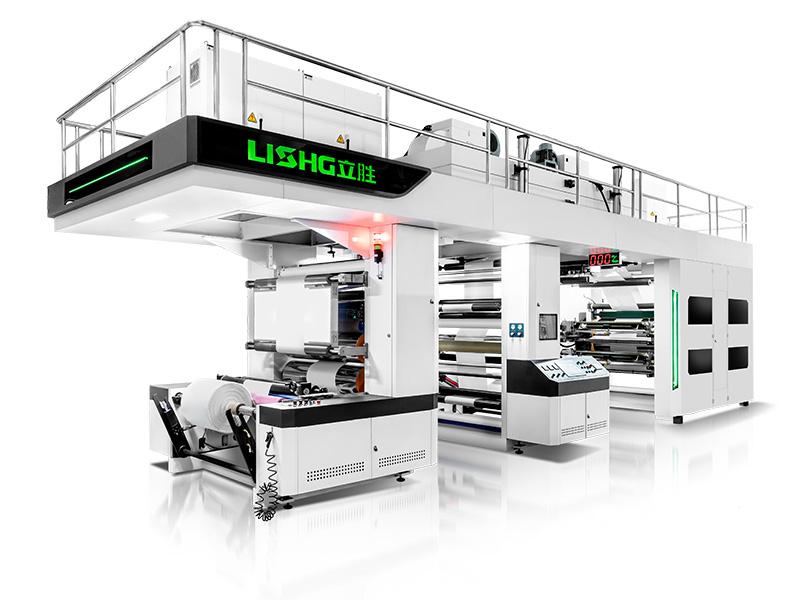
4 Color vs 6 Color vs 8 Color Flexo Printing: What’s the Difference?
When you’re diving into the world of flexographic printing, understanding the difference between 4-color, 6-color, and 8-color flexo printing can really help you make smarter purchasing decisions. Each option offers unique benefits depending on your product needs, budget, and design complexity. Let’s explore these differences together!
What is Flexographic Printing?
Flexographic printing, often called flexo, is a popular method for printing on various packaging materials like plastic, paper, and foil. It uses flexible plates and fast-drying inks, making it ideal for high-volume runs. Now, the number of colors in your flexo press directly impacts the quality and vibrancy of your prints.
Comparing 4-Color, 6-Color, and 8-Color Flexo Printing
Color Capabilities and Print Quality
– 4-Color Flexo Printing uses the standard CMYK (Cyan, Magenta, Yellow, Black) process. It’s great for basic full-color images but can struggle with complex designs or special effects.
– 6-Color Flexo Printing adds two extra colors, often spot colors or varnishes, enhancing vibrancy and allowing for more precise color matching.
– 8-Color Flexo Printing offers even more flexibility with additional colors or coatings, perfect for premium packaging that demands high detail and special finishes.
Production Speed and Efficiency
– 4-color presses are generally faster and simpler, ideal for straightforward jobs.
– 6-color machines balance speed with enhanced color options, suitable for mid-level complexity.
– 8-color presses may run slower due to more stations but deliver superior quality and versatility.
Cost Considerations
– 4-color printing is the most cost-effective, especially for large runs with standard designs.
– 6-color printing costs more but can reduce the need for post-printing processes like lamination or varnishing.
– 8-color printing is the priciest but can replace multiple finishing steps, saving time and improving product appeal.
Material Compatibility
– 4-color flexo works well on common substrates like PE, PET, and paper.
– 6-color and 8-color machines often handle specialty materials better, including metallized films and kraft paper, thanks to advanced ink and drying systems.
Application Examples
– 4-color flexo is perfect for simple food packaging or labels.
– 6-color flexo suits cosmetic packaging or products needing spot colors.
– 8-color flexo shines in luxury packaging, promotional bags, and high-end printed films.
Flexo Printing Comparison Table
| Feature | 4-Color Flexo | 6-Color Flexo | 8-Color Flexo | Best For | Example LISHG Machine |
|---|---|---|---|---|---|
| Color Range | CMYK | CMYK + 2 Spot Colors/Varnish | CMYK + 4 Spot Colors/Varnish | Basic to complex designs | Central Drum Flexo Machine |
| Print Quality | Good | Better | Excellent | Standard to premium packaging | 8-Color CI Flexo Machine |
| Speed | Fast | Moderate | Slower | High volume vs. detailed jobs | Flexo Central Impression Machine |
| Cost | Low | Medium | High | Budget vs. quality focus | Varies by model |
| Material Compatibility | PE, PET, Paper | Includes Metallized Films | Wide Range Including Kraft Paper | Material-specific needs | See product links above |
Key Points to Remember
– 4-color flexo is your go-to for cost-effective, standard packaging.
– 6-color flexo offers a sweet spot between quality and price with added color options.
– 8-color flexo is perfect when you want to impress with premium, vibrant packaging.
– Material choice and print speed are crucial factors in selecting the right machine.
– Investing in the right flexo press can reduce finishing steps and improve overall efficiency.
Case Study: LISHG’s 8-Color CI Flexo Printing Machine
Imagine you’re producing high-end BOPP bags for a luxury brand. Using LISHG’s [8-color CI flexo printing machine] allows you to print vibrant, multi-layered designs with spot colors and varnishes in one pass. This not only saves time but also elevates the product’s shelf appeal, helping your client stand out in a crowded market.
Conclusion
Choosing between 4-color, 6-color, and 8-color flexo printing depends on your specific needs—whether it’s budget, design complexity, or material type. For purchasers like you, understanding these differences ensures you invest wisely in a machine that matches your production goals. Ready to upgrade your printing capabilities? Check out LISHG’s range of flexo printing machines and find the perfect fit for your business today!
FAQs
What types of materials can each flexo printing machine handle?
4-color machines handle common substrates like PE and PET, while 6- and 8-color machines can print on specialty materials including metallized films and kraft paper.
Is 8-color flexo printing always better than 4 or 6 colors?
Not necessarily. It depends on your design needs and budget. 8-color offers more options but at a higher cost and slower speed.
Can I add spot colors to a 4-color flexo press?
Typically, 4-color presses are limited to CMYK. For spot colors, you’d need a 6-color or 8-color machine.
How does flexo printing compare to digital printing?
Flexo is better for high-volume runs and a wide range of materials, while digital excels in short runs and quick turnaround.
Where can I find reliable flexo printing machines?
Brands like LISHG offer a variety of flexo presses tailored to different needs. Visit their product pages for detailed specs and options.






